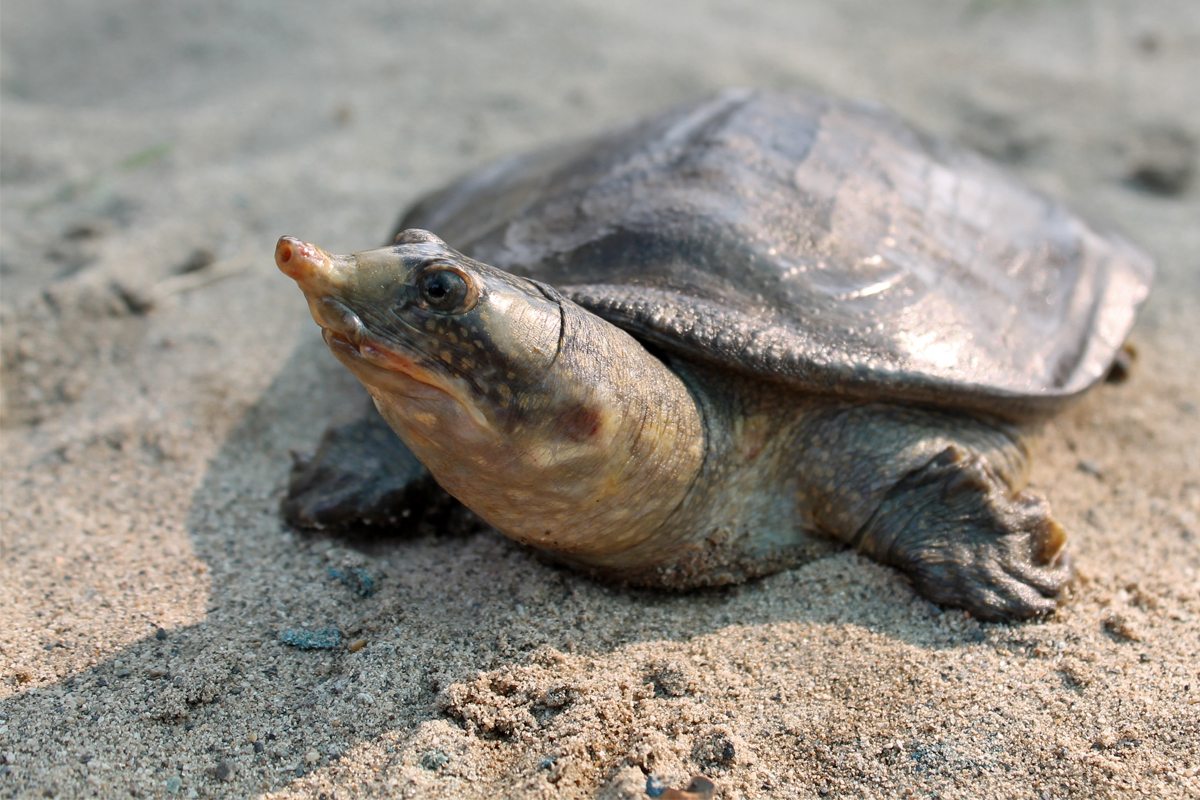Rajasthan Switch to Hindi
Keoladeo National Park
Why in News?
Keoladeo National Park in Rajasthan, famously called the 'paradise of birds', is now emerging as a vital sanctuary for turtles.
- It shelters eight of the ten turtle species found in the state, making it one of the region’s richest habitats for turtles.
Key Points
- Keoladeo National Park:
- About:
- It is a wetland and bird sanctuary located in Bharatpur, Rajasthan. It is a UNESCO World Heritage Site and one of the most important bird-watching areas in the world.
- Chilika Lake (Orissa) and Keoladeo National Park (Rajasthan) were recognized as the first Ramsar Sites of India in 1981.
- Currently, Keoladeo National Park and Loktak Lake (Manipur) are in the Montreux record.
- It is known for its rich avian diversity and abundance of waterbirds. The park is home to over 364 species of birds, including several rare and threatened species, such as the Siberian crane.
- It is a wetland and bird sanctuary located in Bharatpur, Rajasthan. It is a UNESCO World Heritage Site and one of the most important bird-watching areas in the world.
- Fauna: Animals such as jackals, Sambar, Nilgai, wild cats, hyenas, wild boar, porcupine and mongoose can be found in the region.
- Flora: The principal vegetation types are tropical dry deciduous forest dominated by Babul tree (Acacia nilotica) intermixed with dry grassland.
- River: Gambhir and Banganga are two rivers that flow through this National Park.
- About:
- Ideal Conditions for Turtle Habitats:
- The unique blend of water bodies, forest cover, and land within the park creates a near-perfect ecosystem for turtles.
- Deep ponds, marshy areas, and dense vegetation offer optimal conditions for turtle nesting, foraging, and reproduction.
- Turtle Species Found in Keoladeo National Park:
- The park is home to hundreds of turtles, with several believed to be over 200 years old.
- These ancient reptiles add to the park’s ecological and cultural richness.
- Among the diverse species, the Indian Softshell Turtle is especially significant.
- Thriving in ponds and rivers it plays a crucial role in maintaining aquatic health by feeding on aquatic animals and plants.
- This natural scavenging helps purify water bodies and maintain ecological balance.
- The Crowned River Turtle, a herbivorous species marked by yellow-orange stripes on its face, adds to the park’s biodiversity.
- Other rare species include:
- Indian Flapshell Turtle
- Indian Tent Turtle
- Indian Star Turtle
- The park is home to hundreds of turtles, with several believed to be over 200 years old.
Indian Softshell Turtle (Ganges Softshell Turtle)
- About:
- The Indian Softshell Turtle, also known as the Ganges Softshell Turtle, is a freshwater species native to rivers in northern and eastern India.
- It belongs to the Trionychidae family, known for turtles with flexible, leathery shells instead of hard scales.
- Natural Habitat:
- Distinctive Shell Characteristics:
- The turtle’s carapace (upper shell) is smooth, oval to round in shape.
- Its shell typically appears olive or green, often edged with a yellow border.
- Conservation Status:
- IUCN Red List: Endangered
- Wildlife Protection Act (WPA), 1972: Schedule I
- CITES: Appendix I
- Other Notable Softshell Turtles in India:
- Leith’s Softshell Turtle: Endemic to peninsular India and classified as Critically Endangered.
- Peacock Softshell Turtle: Listed as Endangered and found in ponds and temple tanks of northeastern India and Bangladesh.
Rajasthan Switch to Hindi
SC Approves Wetlands Near Ana Sagar Lake
Why in News?
The Supreme Court has approved the Rajasthan government’s comprehensive proposal to develop two new wetlands near Ajmer, aiming to restore ecological balance while ensuring sustainable urban development around Ana Sagar Lake.
Ana Sagar Lake
- Located in Ajmer, it is an artificial lake, built by Prithviraj Chauhan's father Arunoraj or Anaaji Chauhan in the middle of the twelfth century (1135-1150 AD).
- Due to being constructed by Aanaji, this lake was named Aana Sagar or Ana Sagar.
- It is one of Ajmer’s most popular lakes and one of India’s largest lakes.
- Later, the Mughal ruler Jahangir built Daulat Bagh, also known as Subhash Udyan, in the courtyard of the lake.
- Shah Jahan constructed a marble Baradari (pavilion) around it in 1637 AD, which further enhances the beauty of the lake.
Key Points
- Background:
- Ana Sagar Lake, an important urban water body in Ajmer, has faced ecological degradation due to unregulated development and human activities in its vicinity.
- The National Green Tribunal (NGT) had earlier directed the removal of several unauthorized structures in the lake’s green zones, including a Seven Wonders replica to protect the lake’s ecosystem.
- Locations of the Proposed Wetlands:
- Two wetlands will be constructed outside Ana Sagar’s catchment area: a 12-hectare wetland at Foy Sagar (Varun Sagar) Extension near Hathi-Khera, and a 10-hectare wetland at Tabiji-1.
- These wetlands aim to improve water retention, biodiversity, and ecological health in the region.
- Scientific Review and Environmental Assessment:
- The National Environmental Engineering Research Institute (NEERI), appointed by the Ajmer Municipal Corporation, conducted a comprehensive environmental assessment.
- NEERI is a premier research institute under the Council of Scientific and Industrial Research (CSIR), functioning under the Ministry of Science and Technology.
- It plays a vital role in environmental management, pollution control, and sustainable development through R&D, policy development, and technology innovation.
- The National Environmental Engineering Research Institute (NEERI), appointed by the Ajmer Municipal Corporation, conducted a comprehensive environmental assessment.
Wetlands
- Wetlands are defined as areas of marsh, fen, peatland, or water (natural or artificial) with water that is static or flowing, including marine areas with a depth not exceeding six meters.
- Wetlands are ecotone, having land transitional between terrestrial and aquatic ecosystems.
- Significance of Wetlands:
- Natural Water Filters: Wetlands act as natural water filters by trapping sediments, breaking down pollutants, and absorbing excess nutrients.
- Flood Prevention: Wetlands absorb and store excess water, reducing flood risks by up to 60% and safeguarding homes and infrastructure, according to the National Disaster Management Authority (NDMA).
- Habitat for Wildlife: Wetlands, though covering just 6% of the Earth’s surface, support over 40% of global species—including threatened ones like the Sarus Crane—making them vital wildlife habitats, as per Space Applications Centre (SAC).
- Carbon Sequestration: Wetlands store significant carbon in their soil and vegetation, and the Indian Network for Climate Change Assessment (INCCA) highlights their restoration as key to advancing India’s climate goals through carbon sequestration, cleaner water, and reduced flood risks.
- Some of the Wetlands Located in Rajasthan:
|
Protected Area |
Wetland |
|
|
|
|
|
|
|
Shergarh Wildlife Sanctuary |
|


.png)





.jpg)









.png)


.jpg)



 PCS Parikshan
PCS Parikshan


